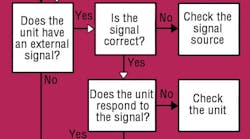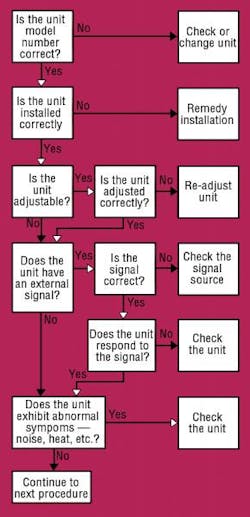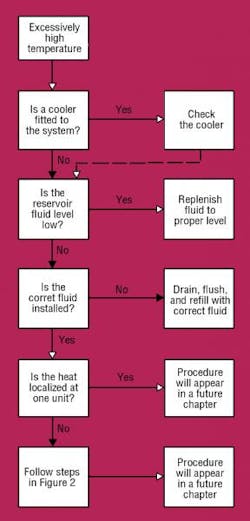Unfortunately, many companies neglect or ignore the internal recordkeeping that is necessary to perform a logical troubleshooting sequence. It may seem foolish to review machine basics on equipment that has run for years, but in many cases, personal observation is the only way to determine operating parameters that can lead you to where problems originate. The Preliminary Checklist, Figure 2, can help you find problem sources that have nothing to do with the machine’s hydraulic system.
On the other hand, hydraulic systems may show signs of leakage or excessive heat, noise, or vibration without any adverse effect on machine performance — at least not at first. But these early signals should not be ignored. Continue your preliminary check by using the human senses of sight, touch, and hearing to identify and pinpoint the problem area.
It is important to remember that a machine may exhibit abnormal symptoms because of a problem that might actually be present elsewhere in the system. For instance, pump cavitation or aeration might be taking place in a remotely located hydraulic power station. In such a case, the Fault Cause Remedy Checklist, Figure 3, should be followed to identify the problem source.
If a preliminary check does not find the problem, a more exhaustive examination, similar to the procedure suggested in the Machine Fault Checklist (Figure 1, from Chapter 2) must be conducted.



